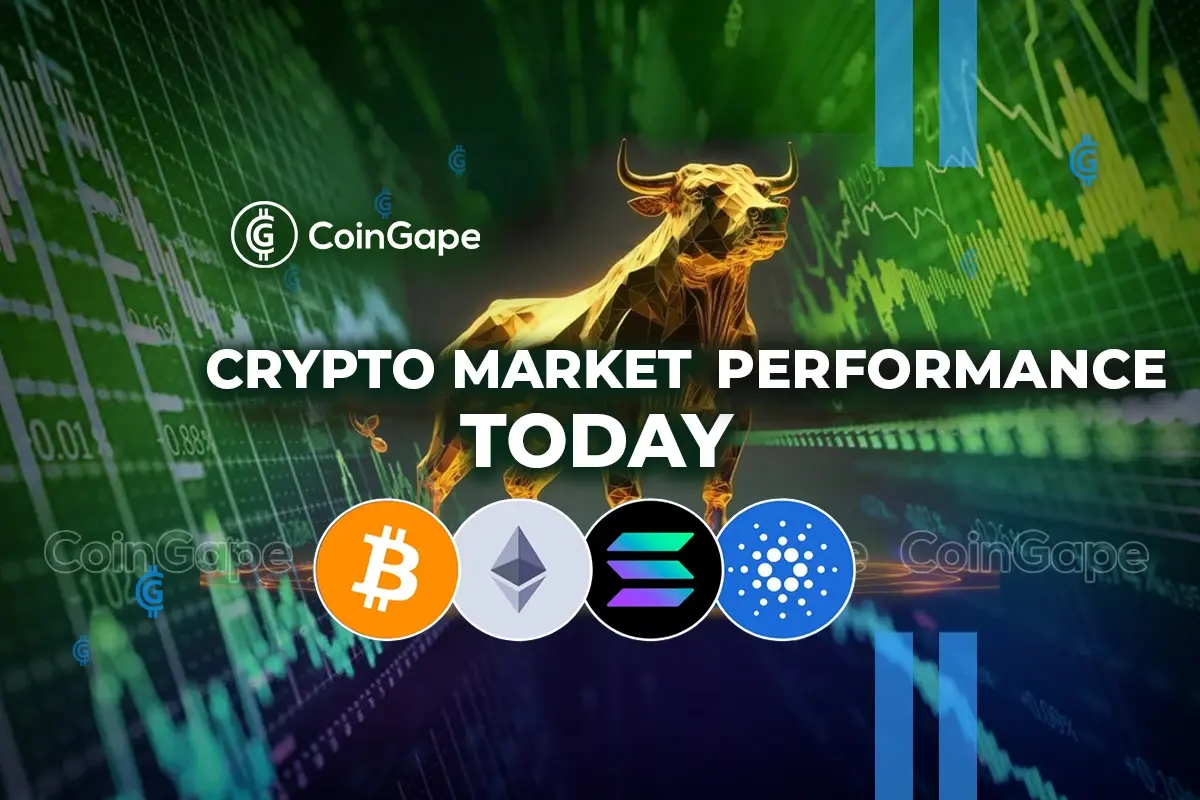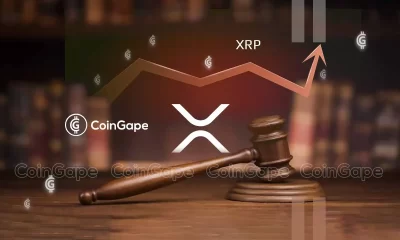Lightning Network
The Lightning Network Privacy Big Picture: Don't Forget the NSA
Published
14 hours agoon
By
admin


One of the secondary benefits of how the Lightning Network works as a scaling solution is privacy. It’s by no means perfect or undefeatable privacy, but it is a better than naive use of the base layer blockchain itself. It’s also not perfectly balanced. The sender learns a good many details about the receiver, but the receiver learns nothing about the sender.
For casual payments it is a big improvement for consumers over on-chain payments. It does have one big problem though, something not unique to Lightning, but a problem for all onion routed systems.
Global Passive Adversaries. That means an actor who is able to passively monitor all the internet connections between everyone involved in a network like Lightning, or Tor. When a message crosses the network, the adversary can see a message move from one node to a second node, and also see that a message went from the second node to a third right after it received one from the first.
If a global adversary exists, then while they cannot see the specific details of a message across the network, they can see where it originated from and where it arrived. That is plenty enough information to deanonymize a payment system like Lightning, where the chief matter of importance is after all who is paying who.
This is the true fundamental shortcoming, Lightning can be very private for senders from their merchants, and soon with coming improvements for receivers from the person paying them, but it is very weak against a truly powerful global adversary.
This can be mitigated however. Payments stand out to a global adversary because that is the majority of traffic nodes will send, and the timing relationship from A to B to C to D, etc. These heuristics can be broken by nodes sending fake traffic to each other regularly.
Fake traffic could take the form of a constant barrage of fake packets, simply replacing fake ones with real messages when payments are routed. This would make it impossible to correlate anything. Other options would be to add decoy messages that continue on after the completion of a payment, or opportunistically make payments when such decoy messages reach you.
Different strategies would have different degrees of success in creating privacy, but something needs to be done. Multiple improvements have been made, or are coming down the pipeline, in the form of BOLT 12 and blinded path invoices, but the larger picture is still the same as it was: totally transparent to a powerful adversary.
Given the scale of importance Bitcoin has rapidly grown to, maybe it’s time to reconsider the larger picture of privacy and not just incremental local improvements.
This article is a Take. Opinions expressed are entirely the author’s and do not necessarily reflect those of BTC Inc or Bitcoin Magazine.
Source link
You may like


US CFTC Issues Subpoena to Coinbase In Polymarket Case, What’s Next?


Buying Greenland Would Be A Huge Boost to US Bitcoin Mining


AI suggests 3 top Solana alternatives to boost wallets this first quarter


BNB Price Rebound Possible: Can It Climb Back to $720?


Bitcoin Dips Below $95K, RUNE and INJ Drop 11%


Don't Buy The Bitcoin Dip
Bitcoin education
Neobank Yopaki Aims To Make Every Mexican A Bitcoiner
Published
1 week agoon
December 31, 2024By
admin

Company Name: Yopaki
Founders: Francisco Chavarria (CEO) and Carlos Chida (CTO)
Date Founded: March 2023
Location of Headquarters: Austin, TX
Number of Employees: Four full time; one part time
Website: https://www.yopaki.com/
Public or Private? Private
In 2021, Francisco Chavarria stood in the audience at Bitcoin 2021 and watched as Strike CEO Jack Mallers passionately delivered his now famous keynote speech during which he revealed that El Salvador planned to make bitcoin legal tender.
That moment sparked something within Chavarria.
“It was unlike anything I’d experienced in my professional career,” Chavarria told Bitcoin Magazine.
“I knew I had to do something in the Bitcoin space after that. It was the seed,” he added.
First-forward ahead two years, and Chavarria found himself putting his career as a Software as a Service (SaaS) consultant on hold to draw up the blueprints for Yopaki, a neobank and investment app with a Bitcoin-focus, aimed at serving the people of his home country, Mexico. (Users outside of Mexico can also use Yopaki’s non-custodial Lighting wallet.)
Since then, he and his co-founder, Carlos Chida, have been hard at work bringing Yopaki to life, including taking part in Wolf’s Bitcoin Accelerator program in efforts to make Yopaki as cutting-edge and dynamic as possible.
But before getting to that part of the story, let’s start with the cultural origin of the platform’s name.
What’s In A Name?
“The name Yopaki comes from the ancient language Nahuatl, the language spoken by the Aztecs,” explained Chavarria.
“The Aztecs lived in the center region of what today is Mexico, and they’re the ones responsible for some of the biggest pyramids in all of Latin America. The center of this historical place is called Teotihuacán, ‘the place of the gods,’” he added.
“The name itself, if I were to translate it into English, most closely means “the pursuit of happiness.’”
Judging by the name alone, it’s clear that Chavarria views Yopaki as more than just another business endeavor — he wants it to have a profound impact on those who use it.
And he’ll need the app to have such an impact if he and his team are to succeed in their mission: to turn every Mexican into a Bitcoiner.
2025 Dream Predictions for Bitcoin in Mexico 🇲🇽😶🌫️
1. Bitcoin adoption in Mexico surges.
2. Mexican Bitcoin startups attract global investors. With El Salvador’s influence, Mexico becomes the Latin American leader for Bitcoin innovation.
3. Peso-Bitcoin integration deepens.…
— Francisco Chavarria (@FranciscoBTC) December 31, 2024
Bitcoin In The Mexican Context
When Bitcoin is brought up in the context of Latin America and other developing regions, it’s often referenced as a tool to “bank the unbanked.”
However, Mexico’s banking system is “quite advanced,” according to Chavarria.
“The infrastructure has been built for people to have access to banking,” he explained.
“It may not be the same banking that we have in the U.S. (where Chavarria currently resides), but, for example, in Mexico, there are stores like 7/11s called OXXOs, and they’re everywhere. Any person can walk into an OXXO with an ID, and within 20 minutes, they can walk out with a Visa card and an app,” he added.
“It’s not exactly a bank, but it provides access to payment rails,” he added.
Chavarria went on to share that these Visa cards charge high fees, though.
“They’re very predatory in that sense,” he said.
So, Yopaki provides its Mexican users with access to three different monetary accounts: a Mexican peso account, a U.S. dollar account and a (non-custodial) bitcoin Lightning wallet. Each of these accounts lets their users transact at lower rates than said Visa cards. (In 2025, Yopaki will also enable its Mexican users to buy stocks, ETFs and other securities, as well.)
By offering a bitcoin wallet alongside accounts for traditional currencies, Chavarria hopes to legitimize bitcoin in the eyes of its users. However, he also feels that Yopaki has some work to do as far as helping Mexicans to get comfortable using bitcoin, which is why he and his team are doing what they can to make the process enjoyable.
Making Bitcoin Fun With Lotería
Lotería is a favorite pastime of the Mexican people. It’s comparable to Bingo but with images instead of numbers.
Chavarria and the Yopaki team included it into the app with a Bitcoin slant — concepts and characters like the Lightning Network and Max Keiser appear in the Yopaki version of the game.
“When it comes to Mexico, people think tequila, tacos, mariachi, and Lotería,” said Chavarria.
“There’s no negative connotation to the game. Because of this, the feedback we’ve received over the last couple of months has been, ‘Man, I didn’t realize that Bitcoin was fun,’” he added.
Users earn sats as they play Lotería within the app. When they’ve earned 1,000 sats or more, they can learn through the app how to transfer those sats from Yopaki’s custody into their own, all within the Yopaki app.
Yopaki teamed up with Breez to bring its users a non-custodial Lightning wallet that doesn’t require its users to to deal with the hassle of Lightning channel management.
Yopaki + Breez
“One of the main reasons we decided to go with Breez is that we knew about their implementation of the Nodeless SDK through Liquid before it was public,” said Chavarria.
“We know channel management is a fundamental roadblock for a lot of people in using an application like this. The second you introduce roadblocks the experience becomes scary. It’s just too much,” he added.
“So, in offering a product in which users can do an immediate transaction, that magic that we’ve all had as Bitcoiners can be brought to the masses.”
Chavarria went on to share that Yopaki’s Lightning wallet is so easy to use that even his mother-in-law is now using (and enjoying) the product.
He’s excited to bring such a product to the Mexican market, because, as he put it, Mexicans “have been rugged” by custodial solutions in the past.
“It’s important that we let users know that we don’t hold their funds,” said Chavarria.
Prioritizing Bitcoin Education
Not only does the Yopaki team encourage and prioritize self-sovereignty, but it also educates its users about Bitcoin, as it doesn’t underestimate their curiosity and ability to learn.
“We have curated content including lessons on broad topics like ‘What is money?’ — not just Bitcoin, but money,” explained Chavarria.
“They’re micro lessons that take anywhere from one to two minutes to complete. At the end of the day, it’s about creating a curiosity that I feel and I think a lot of us feel the legacy system has not really cared about,” he added.
The educational component within the app also sets it apart from its competitors in the region.
“Bitso is the largest player not just in Mexico but all of Latin America, and we have a lot of respect for what they’ve done, but they have turned into a casino with tokens and NFTs and all of that,” shared Chavarria. “We believe they have really underestimated the curiosity of their users and just triggered the degenerate gambling addiction side of things instead.”
Guidance From Wolf
Given how cool, calm and collected Chavarria was when I spoke with him, I got the impression that the now fleshed out vision for Yopaki came to him with relative ease, maybe even in a flash of light.
But he told me otherwise.
Apparently, he and Chida’s experience at Wolf’s Bitcoin startup incubator pushed them out of their comfort zone and into a state of mind that helped them to make Yopaki as unique as it is.
“It was one of the most important and meaningful experiences we could have gone through,” said Chavarria of his time at Wolf. “The type of feedback we received and the type of strategy sessions we had were, to say it nicely, brutal in a good way.”
Chavarria explained how he and Chida did, in fact, enter the Wolf program thinking they’d already crafted a solid vision for Yopaki, but that the guidance they received in the program is what pushed them to create many of the features that differentiate the apps for others like it.
“Having people like Kelly Brewster (Wolf’s CEO), who has years of experience at Goldman Sachs, and Ross Stevens (Wolf’s founder) really sit down and ask the tough questions and push you to the limit was powerful,” said Chavarria. “They made us really consider ‘Do you understand that what you’re doing is difficult?’ and made us articulate how we were going to execute our plan.”
The Year Ahead
As mentioned, Yopaki will enable its Mexican users to begin investing in traditional assets in the coming year and, starting next month, it will offer users a bitcoin exchange, as well.
What is more, it will issue its users debit cards that they can use to spend their pesos, dollars or bitcoin. And Chavarria says it plans to offer sats back rewards when users purchase either traditional assets or bitcoin via the app.
With so much coming down the pike, Chavarria is in good spirits.
“I’m just grateful that we’re doing this,” he said.
“It’s been really fun to build in the bear — now the good times are coming.”
Source link
Atomic Swaps
Earn Bitcoin For Providing Liquidity Via Boltz Pro
Published
1 week agoon
December 30, 2024By
admin

Today, Boltz is launching Boltz Pro, a service that lets users help Boltz manage its bitcoin wallet and Lightning channel liquidity, and I plan to test it out.
But first some background on how Boltz Pro works.
According to Kilian, a co-founder of Boltz, the balances of Boltz’s wallets and Lightning channels are constantly shifting, especially as the volume and velocity of sats flowing through the platform increases.
So, the idea behind Boltz Pro is that users can help provide liquidity for swaps in the event that Boltz’s balances run low.
Here’s an example:
Let’s say Boltz is running short on its base chain bitcoin supply. Boltz will set its dynamic fee to -0.15% for bitcoin-to-Lightning swaps. This means that users get paid a 0.15% fee.
Once Boltz has seen enough volume flow in this direction and Boltz’s bitcoin wallet is refilled, fees will return to normal.
You won’t need to sign up to use Boltz Pro. Just stay on the lookout at https://pro.boltz.exchange/ for when fees on the platform flip negative and take advantage of the opportunity. And keep in mind that Boltz never takes custody of user funds, so you get to earn these sats in a non-custodial manner.
This is now the first place I’ll check when I’m looking to move sats between the base chain and Lightning or vice versa, as I’d much rather be paid to use Boltz than pay to use it.
Kudos to Boltz for enabling users to make a few extra sats for helping them out.
This article is a Take. Opinions expressed are entirely the author’s and do not necessarily reflect those of BTC Inc or Bitcoin Magazine.
Source link
business
David Marcus: From PayPal President To Bitcoin Believer
Published
2 months agoon
October 30, 2024By
admin
David Marcus is taking his experience as the former head of PayPal and Meta Messenger and applying it to building on Bitcoin’s Lightning Network.
At Lightspark’s first partner summit, Lightspark Sync, he and his team rolled out new capabilities for the Universal Money Address (UMA) standard it launched one year ago. These new features will make it easier to tip, pay for subscriptions and invoice over Lightning (and in conjunction with banks in some cases).
At the summit, Lightspark also unveiled a new Bitcoin L2 it has built — Spark — which is interoperable with Lightning and which enables users to use bitcoin (and stablecoins) non-custodially.
I sat down with Marcus the day before Lightspark Sync to learn more about what drives him. We also discussed his strategy in harnessing the power of Bitcoin as a neutral global settlement layer, while still meeting everyday users where they’re at regarding what type of money they like to use.
A transcript of our conversation, edited for length and clarity, follows below.
Frank Corva: I recently saw you post on Twitter that you were happy to be sick on a weekend versus on a weekday because you’re so excited about what you’re working on here at Lightspark. What about this work makes you so excited?
David Marcus: Well, the general idea of changing the way money moves around the world is something that I’ve been obsessed with for a very long time. The fact that we can really change this for potentially billions of people in a profound way is a once in a generation opportunity that I get to actually work on with an amazing team. It’s exciting when you start making progress and when you start to see product market fit.
Corva: Some members of the Lightspark team just showed me the new capabilities of the Universal Money Addresses (UMA) as well as Lightspark’s new Bitcoin L2, Spark. You’re catering to both everyday people who want to move money globally and Bitcoin enthusiasts who care about self-custody. Is the strategy to just get as many people using your products as possible?
Marcus: Just to backtrack a little bit — I don’t need to convince you, but once you get the conviction that Bitcoin is the only thing that can actually be the internet of money because it’s the only asset and network that’s neutral enough to be that, then you have to wonder: Why hasn’t it already won?
If you go back and peel the onion, you start to see, first of all, bitcoin wasn’t moving all that quickly or cheaply. That’s where the Lightning Network came in. The problem with the Lightning Network, while it’s been around for a while, was that it was really hard to implement, really hard to operate and really hard to maintain. And it wasn’t super reliable for transactions.
So, we invested a good chunk of the two plus years of our existence into really making an enterprise grade entry point into Lightning for institutional players, banks and exchanges. That really changed the game, because a lot of them were looking at the lack of activity on the Lightning Network and at the complexity of getting on the Lightning Network and then it became a self-fulfilling prophecy: there’s no activity, it’s too hard, I’m not going to do it
Corva: I’ve heard those complaints before.
Marcus: We broke that cycle by launching Lightspark Connect. That was the foundation, because if you can’t make what I call TCP/IP packets for money — fragments of bitcoin on Lightning — work really well, then you can’t do anything. That was priority number one.
Then we realized we need to enable people to move the currencies they use for their everyday goods and services on the network. That’s when we launched UMA, which is this Universal Money Address standard built on top of LNURL, and extended it so that regulated entities can not only be compliant but can also change in and out of bitcoin and get a quote from the counterparty they’re sending to for the desired currency of the recipient.
That was starting to really work, but then we realized, “Okay, we need to reach [people on] the network that are going to implement UMA natively across the world, but network effects are going to take forever.” That’s where Extend comes in. It makes Bitcoin, Lightning, and UMA compatible with the legacy payment and banking rails, which is really critical.
That’s now launching, and we’re seeing really promising traction with making the entire banking sector basically compatible with Lightning. People have the ability to send and receive money in real time 24/7, no bank holidays, no weekends, nothing.
Then we realized that institutions are building on top of UMA and are offering the ability for their customers — whether they’re consumers or businesses — to claim an UMA address, which is good for peer-to-peer payments, but there’s so much more that we can do. That’s where UMA Request and UMA Auth come in.
Corva: From what I’ve learned thus far, these seem like they will be quite important for merchants.
Marcus: With UMA Request, whether you’re a business or an e-commerce site, you can request money from a wallet [that holds] another currency, and have the transaction settled on Lightning. Then there’s UMA Auth, which is OAuth for money. It’s basically the ability for wallet holders or account holders that are UMA-enabled to delegate push and pull of funds with user set limits. If you make the credit card comparison, you can give your credit card for a subscription, but you don’t set the limit.
So now, if you look at where we are: We basically made Lightning the thing that moves bitcoin fast and cheap — really easy to integrate, maintain, and operate. We figured out a way to move fiat currencies on top of the network in a seamless way. We extended the network to make it compatible with the old banking rails. But what’s missing for Bitcoin now to win fully and entirely and become the true open standard for moving money on the internet? I think there are two things that are holding it back.
One is self custody wallet support. If the network is a closed network and only works between custodial entities, we don’t want that. We want this thing to be as open as possible. Also, for developers, if you need to ask someone for permission to develop something, to test something, to build something, then it’s not like the internet — it’s like CompuServe or AOL.
Support for fast and cheap self-custody wallets on Bitcoin is something that we tried to figure out with Lightning, and it’s basically impossible. I mean, it’s possible but economically non-viable to park that amount of liquidity in front of every self-custody wallet for an eventual future transaction. Then, there are a bunch of different things that we explored with LSPs. They are either non-compliant or have a lot of other issues around how they move money.
The second thing was stablecoins, which are basically a version of a US-dollar denominated bank account for people who can’t have the real thing. As they grow in popularity and usage, if we can’t make them travel natively on Bitcoin, then we’re at a disadvantage. And so that’s why we built Spark, which is what we see as a totally non-linear jump forward for Bitcoin that will enable self-custody wallets to interoperate fully with Lightning.
It really extends the reach of self-custody to Lightning. It makes stablecoins a reality on Bitcoin, which they couldn’t be as well on Lightning, because, if you look at Taproot Assets and [other protocols like it], they’re pretty good on top of Lightning, but then you go back to the problem of pairwise channels for each of those stablecoins. In a world where you’re going to have thousands of stablecoins, it’s just not going to work.
We believe Spark solves the last two problems standing in a way of Bitcoin becoming the internet of money.
Corva: UMA Auth enables people to make payments within other apps. Was it challenging to build something that accomplishes this, something that makes payments and tipping not only possible but easy?
Marcus: There are several things here to unpack. First of all, making Lightning work really well for regulated entities was really hard. Once you’ve done that, you need to build something that enables them to move the money that people want to use and do it in a way in which regulated entities can meet their compliance requirements. That’s something that’s non-trivial.
Then, the Extend piece is actually understanding how payment systems work and really doing the work — which is a lot of work — to make the network compatible with existing payment rails.
So, A, it’s a lot of work. B, it’s a lot of understanding of not just how Bitcoin and Lightning work, but also how traditional payments globally work, what the regulatory landscape looks like, and what people, what companies and regulated institutions actually need to trust the network that they’re going to connect to and offer to their customers.
Corva: Do banks see the benefits in using Lightning as a settlement layer? In some ways, it seems like with what you’ve built, there would be no need for CBDCs, which would help keep smaller banks in business, because it isn’t a given that CBDCs will be able to be used for international remittances.
Marcus: Some banks do, and some others will eventually, but they’ll take a little more time.
At the end of the day, if you build a more efficient network that enables global money movement faster, cheaper, in real time 24/7 and with no blackout dates, then that’s where money is going to flow and the financial system and the ecosystem players are just going to need to adapt to that.
If you’re a bank you’re going to be able to offer global payments to your clients at a cheaper rate and have a margin on top of that, which you know is going to be very comfortable if you’re competing with the current alternatives — international wire transfers are still forty five to fifty dollars.
Corva: You’re working with Nostr Wallet Connect (NWC) and the team from Alby. It seems like you really have your ear to the ground regarding new technologies coming to market in the Bitcoin, Lightning and Nostr spaces.
Marcus: Absolutely. With Nostr Wallet Connect, there’s actually a really good solution to the problem of delegating Auth, or delegating the ability to push and pull from a wallet with a protocol, that is starting to have nascent network effects in the Bitcoin and Nostr communities.
It’s really good work, and so why not extend it and enable more things to happen with Nostr Wallet Connect for mainstream use cases? That’s the way we look at things. We look at what the entire community is building, we contribute to those efforts, and then we try to extend it to bring it to mainstream consumers so they can use it in a way that is going to be familiar and not foreign to them.
Corva: Do you have any final thoughts you’d like to share?
Marcus: We’re really excited. We feel like all of these capabilities that we’ve been hard at work on in are almost two and a half years of existence are reaching a tipping point right now where basically there are all of the capabilities that are required for Bitcoin to decisively win at becoming the open internet for money, and now it’s just a matter of executing, of finding all of the entities that are going to not only share that vision but execute it with us.
That’s why — to your point about me not wanting to be sick on a work day — I feel like this is just too exciting to not work on every day.
Source link
US CFTC Issues Subpoena to Coinbase In Polymarket Case, What’s Next?

Buying Greenland Would Be A Huge Boost to US Bitcoin Mining
AI suggests 3 top Solana alternatives to boost wallets this first quarter
BNB Price Rebound Possible: Can It Climb Back to $720?
Bitcoin Dips Below $95K, RUNE and INJ Drop 11%

Don't Buy The Bitcoin Dip
ChatGPT’s top 5 crypto picks for the 2025 market surge
XRP Flashing Bullish Signal That Previously Triggered 470% Upside Burst, According to Analyst Ali Martinez
FTX Breaks Silence On Backpack’s Alleged Acquisition Of The Defunct Exchange

Steve Hanke Is Wrong About the Strategic Bitcoin Reserve
Shiba Inu may not reach $1, here’s the token to make millionaires in 2025
70 Million DOGE Make Their Way To Binance Amid 10% Dogecoin Price Crash
Terraform Co-Founder Do Kwon’s Trial To Begin In 2026

The Lightning Network Privacy Big Picture: Don't Forget the NSA
Digital banking giant Revolut joins Pyth Network

Ethereum’s lowered yield might signal a paradigmatic shift in the ecosystem

Telegram users can send gifts to friends, TON fails to pump

Bitcoin Could Rally to $80,000 on the Eve of US Elections

Institutional Investors Go All In on Crypto as 57% Plan to Boost Allocations as Bull Run Heats Up, Sygnum Survey Reveals

Crypto’s Big Trump Gamble Is Risky

Arthur Hayes, Murad’s Prediction For Meme Coins, AI & DeFi Coins For 2025

A Kamala Presidency Could Be Just as Bullish for Bitcoin

Ripple-SEC Case Ends, But These 3 Rivals Could Jump 500x

SEC filing underway, Bitcoin rewards app Fold adopts FLD ticker

Cardano and the XRP price action lock in bulls vs bears battle as RCO Finance prepares for 3,000% surge

A16z-backed Espresso announces mainnet launch of core product

Tether CEO Paolo Ardoino Denies Rumors That Stablecoin Issuer Is Under Federal Investigation

Crypto Exchange OKX Moves To Support USDC Ecosystem by Adding Six New Trading Pairs

Trump’s Coin Is About As Revolutionary As OneCoin

Ripple Vs. SEC, Shiba Inu, US Elections Steal Spotlight
Trending

 DeFi3 months ago
DeFi3 months agoEthereum’s lowered yield might signal a paradigmatic shift in the ecosystem

 News3 months ago
News3 months agoTelegram users can send gifts to friends, TON fails to pump

 Bitcoin2 months ago
Bitcoin2 months agoBitcoin Could Rally to $80,000 on the Eve of US Elections

 Bitcoin2 months ago
Bitcoin2 months agoInstitutional Investors Go All In on Crypto as 57% Plan to Boost Allocations as Bull Run Heats Up, Sygnum Survey Reveals

 Opinion2 months ago
Opinion2 months agoCrypto’s Big Trump Gamble Is Risky

 24/7 Cryptocurrency News2 months ago
24/7 Cryptocurrency News2 months agoArthur Hayes, Murad’s Prediction For Meme Coins, AI & DeFi Coins For 2025

 Opinion3 months ago
Opinion3 months agoA Kamala Presidency Could Be Just as Bullish for Bitcoin

 Price analysis2 months ago
Price analysis2 months agoRipple-SEC Case Ends, But These 3 Rivals Could Jump 500x



